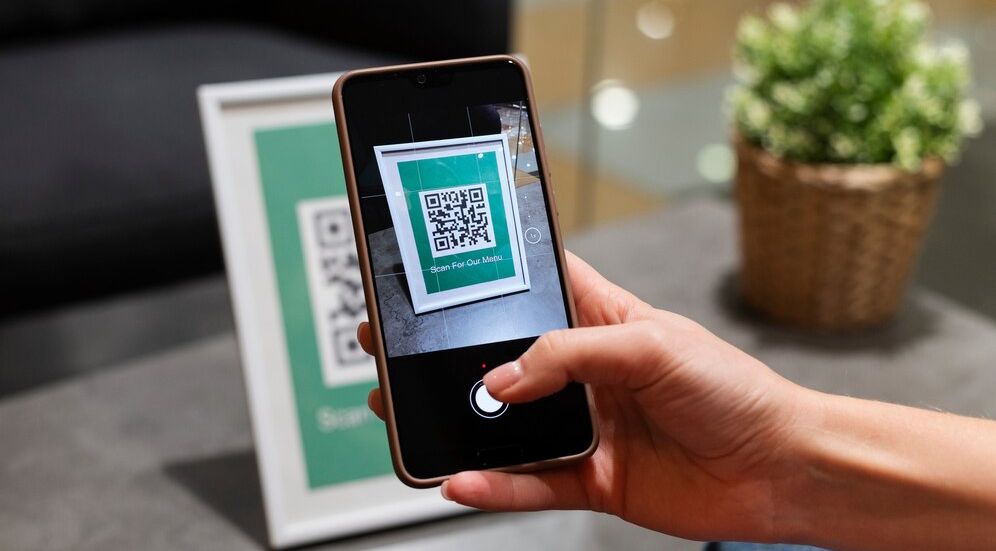How QR Codes Are Transforming Contactless Payments and Transactions
 Divsly
Divsly
In an era where convenience and safety are paramount, QR codes have emerged as a pivotal technology, especially in the realm of contactless payments and transactions. The COVID-19 pandemic accelerated the shift toward touch-free solutions, and QR codes became a central element in this transformation. This blog explores how QR codes, particularly when created with a reliable QR code generator, are revolutionizing the way we make payments and conduct transactions.
What Are QR Codes?
Quick Response (QR) codes are two-dimensional barcodes that can store a variety of data, including URLs, text, and other information. When scanned by a smartphone or other compatible device, they instantly provide the stored data, making them ideal for quick access to information or to trigger specific actions, such as opening a payment link or accessing a website.
The Rise of Contactless Payments
Contactless payments have gained immense popularity due to their convenience and hygiene benefits. Whether you're paying for a coffee, hailing a ride, or making an online purchase, contactless methods are becoming the norm. QR codes have played a significant role in this shift by providing a simple, user-friendly way to facilitate transactions without physical contact.
The Role of QR Code Generators
A QR code generator is a tool that allows you to create custom QR codes for various purposes. Businesses use these generators to design unique codes that align with their branding, include specific information, and link to particular destinations. The ability to generate custom QR codes has made it easier for businesses to adopt this technology for contactless payments and transactions.
Benefits of Using QR Codes in Contactless Payments
Speed and Efficiency: QR codes streamline the payment process. Customers can scan a code and complete their transactions in seconds, reducing wait times and improving customer satisfaction.
Reduced Physical Contact: By scanning a QR code, customers can avoid touching payment terminals or exchanging cash, minimizing the risk of spreading germs.
Enhanced Security: QR codes can be encrypted or contain unique identifiers, adding a layer of security to transactions. This is especially important for sensitive payment information.
Versatility: QR codes can be used in various contexts, from in-store payments to online purchases. They can also be integrated into marketing materials, receipts, and product packaging.
Cost-Effective: Creating QR codes with a QR code generator is cost-effective compared to other contactless payment solutions. Businesses can easily implement this technology without significant investment.
Real-World Applications of QR Codes in Contactless Payments
Retail: In retail environments, QR codes are often displayed at checkout counters, allowing customers to scan and pay using their smartphones. This reduces the need for cashiers to handle cash or cards.
Restaurants and Cafés: Many restaurants and cafés have adopted QR codes for contactless menu access and payment. Customers can scan a code to view the menu, place orders, and pay without physical contact.
Transportation and Mobility: Ride-sharing apps and public transportation systems use QR codes for ticketing and payment. Passengers can scan a code to access transportation services without paper tickets or physical transactions.
E-Commerce: Online retailers use QR codes for a seamless payment experience. Customers can scan a code to complete their purchase or to receive special offers.
Healthcare: In the healthcare sector, QR codes are used for patient check-ins, appointment confirmations, and contactless payments for medical services.
Tips for Implementing QR Codes in Contactless Payments
Choose a Reliable QR Code Generator: The quality of your QR codes depends on the QR code generator you use. Choose a reputable generator that offers customization options, error correction, and analytics.
Ensure Compatibility: Test your QR codes across different devices and platforms to ensure they work seamlessly for all users.
Promote Safety and Security: Clearly communicate the safety benefits of using QR codes for contactless payments to your customers. Emphasize security features to build trust.
Integrate with Other Systems: Integrate QR codes with your existing payment systems and customer relationship management tools to streamline operations.
Keep It Simple: Design QR codes that are easy to scan and understand. Avoid overcrowding with excessive information.
Conclusion
QR codes have transformed the way we approach contactless payments and transactions. Their simplicity, versatility, and safety benefits have made them a go-to solution for businesses across various industries. By using a reliable QR code generator, businesses can create custom QR codes that enhance customer experience, improve operational efficiency, and contribute to a safer environment. As technology continues to evolve, QR codes are likely to play an increasingly significant role in the future of payments and transactions.
Subscribe to my newsletter
Read articles from Divsly directly inside your inbox. Subscribe to the newsletter, and don't miss out.
Written by
